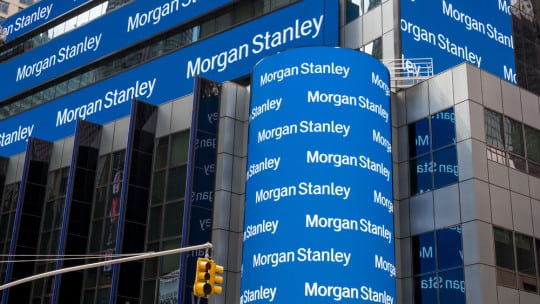
For almost one week after a March 28 front-page story in the New York Times with the headline, “Morgan Stanley Knew of a Star’s Alleged Abuse. He Still Works There,” Morgan Stanley had little to say.
Some background: The story concerned Douglas Greenberg, a star Morgan Stanley wealth advisor based in Oregon. Despite the company knowing for years of physical abuse and stalking accusations from multiple women against Greenberg, he continued to hold his job. Nearly one week after the Times’ story appeared, a Morgan Stanley spokesperson said Greenberg now was on “administrative leave pending further review of the situation.”
An April 3 follow-up story in the Times reported Morgan Stanley fired Greenberg. It included a statement saying the bank needed to “do better” in such situations. In full, it said, “We believe that our employees should behave in a manner consistent with our firm’s values and the trust our clients place in us, both of which include treating women, and indeed everyone, with dignity and respect. We have undertaken steps in recent years to ensure that issues such as this are properly escalated. However, in light of current events we must and will do better.”
Silence or Communication?
Silence is not always golden. PR pros know companies that fail to communicate can extend a crisis or make it worse. Morgan Stanley could have anticipated the PR issue the Times’ front-page story created. Still, following the says-it-all headline—“He Still Works There”—the best response the bank could come up with, almost one week later, is that it fired Greenberg and it could have “done better.”
Action Plan
What should the bank do? First, this story has the potential to do real damage to Morgan Stanley’s reputation. It should have been prepared with a thoughtful, proactive and relevant initial response. This might have been a good time for Morgan Stanley CEO James Gorman to be the front and center spokesperson for the company. Have Gorman say such conduct does not represent who Morgan Stanley is might have helped calm the waters.
There was also no mention of the issue on any of Morgan Stanley’s digital platforms. No tweets, posts or blogs. The company has even gone to the trouble of wiping its website clean of any trace of the fired broker. Greenberg made Forbes’ 2018 list of Oregon’s top wealth advisors. Forbes removed his name after the March 28 article.
But while Morgan Stanley wasn’t talking, others were. We assume the company was monitoring the social media conversation. It would have been prudent to respond in an authentic way to comments, rather than simply let the story—and the hits to its reputation—continue.
The 2018 edition of the annual Global RepTrak 100 includes prudent advice for companies facing a reputation crisis:
- Regain the benefit of the doubt. Companies can do this by taking a stand on issues important to their stakeholders, such as workplace conditions, equal rights, etc. Morgan Stanley faced sexual harassment issues previously and fired an employee for workplace misconduct. It could mount a proactive effort to regain the reputation narrative by announcing—and following through—on concrete steps to change the company culture.
- Communicate authentically. Or in Morgan Stanley’s case, just communicate, period. For CEO Gorman, who has been quoted as saying, “I’m pretty invisible and that’s just fine,” this was a missed opportunity to be an effective communicator. That quote aside, he appears to be a leader who values having a life outside Wall Street. He is one of 10 kids, an Aussie, looks forward to seeing his dog’s tail wag at the end of the day, spends time with family on weekends, you get the picture. Gorman could have softened the reputational blow by being the one to deliver a genuine message. Having a relatively unknown spokesperson be the face of the company usually is far less effective than having the CEO out front, says Stephen Hahn-Griffiths, chief research officer of the Reputation Institute.
- Proactively navigate social issues. This goes back to Morgan Stanley’s missed opportunity to reset the narrative. By ignoring Greenberg—a great earner but a problem destined to blow up in the #MeToo climate—the company now is in damage-control mode, rather than reputation rebuilding.
We know corporate reputation and the bottom line are linked. In the book Corporate Reputation and Competitiveness, Gary Davies writes reputation accounts for 3% -7.5% of annual revenue. In Morgan Stanley’s case, it seemed to ignore Greenberg's issue, hoping it would go away, willing to gamble that a hit to its reputation could have a minimal influence on profits.
It’s likely Morgan Stanley’s reputation issues will continue. It can expect to see media stories and perhaps a case or two against the bank or an employee. Communications professionals know well the challenges of rebuilding a brand when trust is broken. A good first step would be for the company—and its CEO—to honestly communicate how it’s going to “do better.”
Claudia Keith is chief communications officer of the City of Palo Alto, CA.
